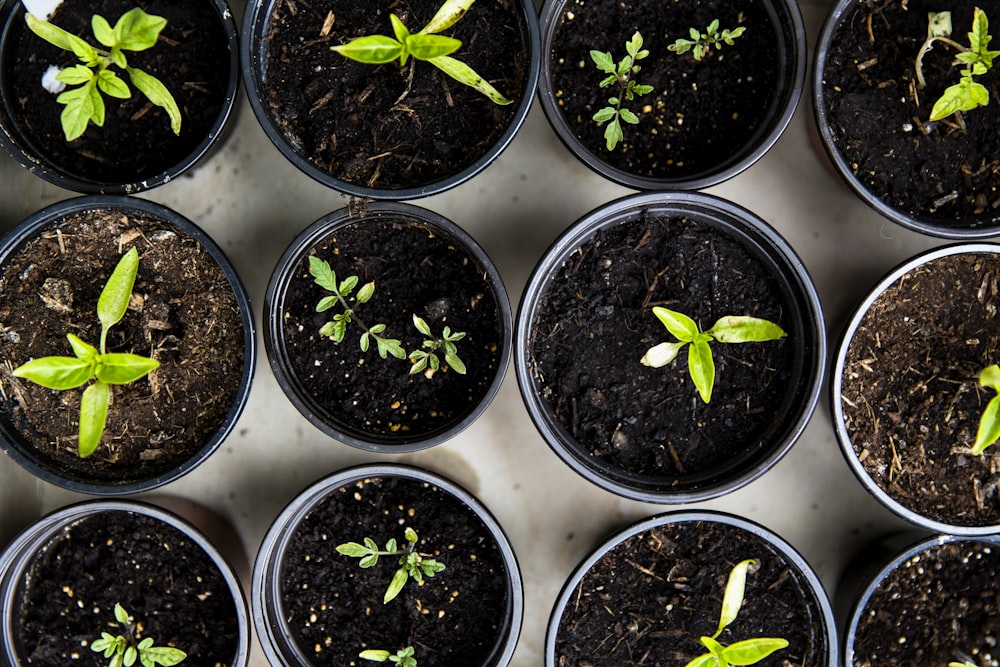
Over the last few summers, I’ve developed a bit of an obsession with having a garden. Living in an apartment means I can only have a few things in buckets and planter boxes on my deck. But I’ve become something I never envisioned of myself; I’ve become a gardener.
I don’t do flowers (because of allergies) or green plants. I grow lettuce and spinach, several kinds of herbs, and tomatoes. The intent of starting a deck garden was to save money on my grocery bill. But with each year, I have become more obsessed with the growing process. Last year, I even kept my tomato plants going into December! (Side Note: One of the benefits of growing in buckets/planters is being able to bring them inside at night if it gets below freezing. That prolongs the growing season.)
This is my fourth year having a deck garden. I added another herb to the mix, and I’m trying three different kinds of tomatoes instead of the usual Roma and cherry varieties. They’re all doing well so far. I even harvested my first bunch of spinach the other day.
Growing a Story
One weird thing about my newfound love of growing plants is that I realized how much gardening is like writing. Both require the right equipment, providing care and attention, and a lot of patience.
There are several similarities in how you grow a story and how you grow a garden.
- Planting an Idea
Any new story starts with an idea. There’s a flash of bright light and angels singing around you as a story forms in your mind. Okay, so it’s not quite that dramatic. But when you get an idea for a new story, it starts with small glimpses of setting and characters, But you can also see the big picture of what you believe that idea can become. Similarly with plants, you start with a tiny seed or starter plant. While that might seem small, you can envision what the full-grown plant will look like. And you can already taste the meals and snacks you can make from homegrown garden produce.
- Feeding Ideas With Sun and Water
With any plant, the two most important ingredients come from nature. On a basic level, growing plants comes down to having the right balance of sun and water. While we can’t control the clouds, we can make sure to place plants in an area where they can get the appropriate amount of sun and shade. And when there’s not enough rain for our plants, we can water them as needed.
The same is true for a story idea. Stories take time and attention. They require the right balance of creative energy and narrative structure. A story with too much imagination and not enough structure might be fun to write but ultimately won’t appeal to many readers. But a story with all structure and not enough creativity becomes too formulaic and can be boring. Stories need both imagination and structure to hold up.
- Watching Your Ideas Grow
Over the course of the summer, plants grow and begin to produce their respective types of fruit, vegetables, or leaves.. But much to my chagrin, that doesn’t happen overnight. However, with each passing week, I can see the subtle changes in my plants. From small stalks to tall ones that eventually produce little flowers, I can watch them grow.
Stories don’t grow overnight either. Even shorter stories and poems take time to fully develop. You start with that small glimpse of an idea. Then, with time and attention, you begin to craft it from rough draft to revisions to final product. With each new layer of writing, the story moves from idea to a fully bloomed vision.
- Pruning and Protecting Your Ideas
While nature does most of the work in the garden, some plants require a little extra attention. We need to prune them occasionally to cut back stray leaves. Or, depending on where you live, you might need to add some extra treatments to prevent bugs or fungus.
This is the same with the editing process for a story or essay. They require pruning and protection. Editing cuts back unnecessary words and ideas. Sometimes you need extra help from outside sources to make sure your story lives up to its potential. Just like adding treatments to keep unseen threats away from your plants, having outside help with your story can give you more piece of mind. Having someone else read your work, whether that’s a professional editor, or even a friend, can help you catch things you might not have noticed.
- Harvesting Your Ideas
As the summer progresses, you finally begin to see your plants mature. Pulling off your first tomato or chopping up a pile of herbs that you grew feels so rewarding. You gave them your time and attention, and provided extra care when needed. You watched them grow from a tiny plant into something that can be eaten and entjoyed.
And with your story, as you develop each layer to see your ideas to maturity, when you finally have a finished book, story, or essay, you have the satisfaction of knowing how much time and energy you devoted to your work. What began with a small glimpse of an idea becomes a complete narrative ready to be sent into the world for others to enjoy.
Reignite your creativity!

Subscribe to get new content, monthly newsletter, and important updates. You'll also receive a free download - "30 Days of Creative Inspiration."

